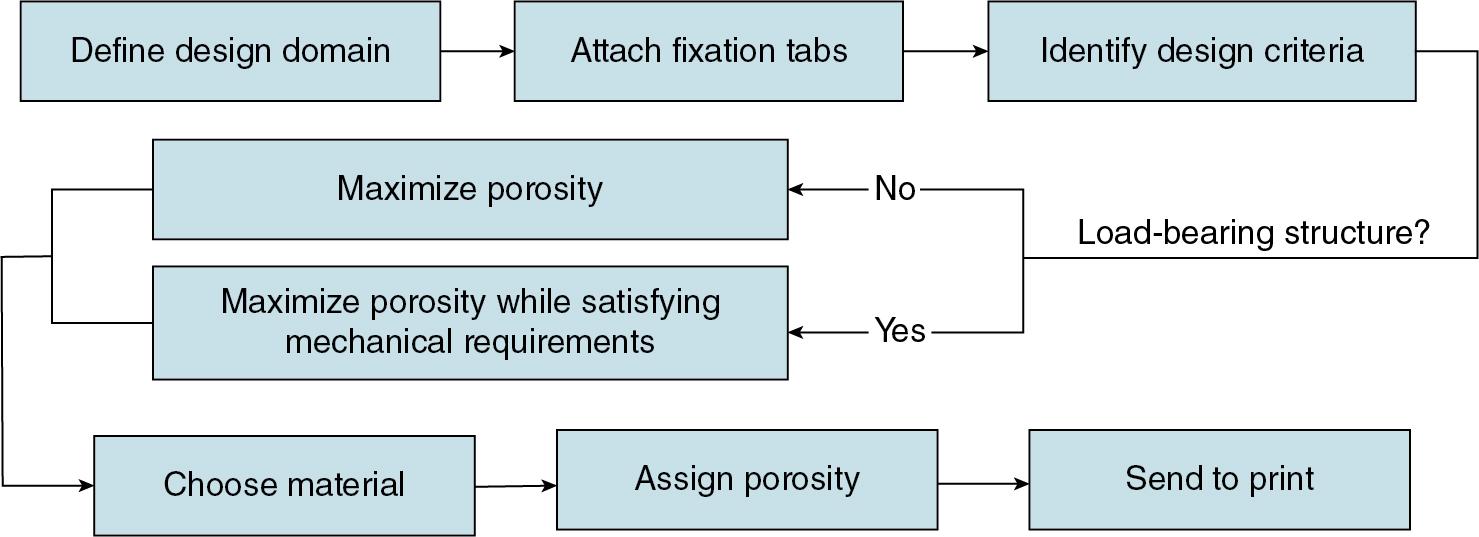Physical Address
304 North Cardinal St.
Dorchester Center, MA 02124
Critical-sized craniofacial defects (defects that cannot heal spontaneously within a patient’s lifetime without surgical intervention) occur due to trauma, craniotomy (surgical removal of part of the craniofacial bone to expose the brain for tumor resection), and congenital malformations. They present major challenges to facial reconstruction. These defects can cause a series of complications, including infection, vision impairment, headache, neurological deficits, and soft tissue infection. The contemporary gold standard for repairing large craniofacial defects is autologous bone graft, which very often involves secondary surgeries in patients for bone harvest and is sometimes susceptible to bone resorption after transplantation. Additionally, carving anatomical shapes from harvested bone further complicates the procedure.
The computer-assisted design/computed-assisted manufacturing (CAD/CAM) craniofacial reconstruction based on medical imaging techniques, such as cone-beam computed tomography (CBCT) and magnetic resonance imaging (MRI), provides useful information for pretreatment surgery plans and can generate anatomically shaped scaffolds that fit patient-specific defects. Compared to conventional manufacturing, which requires space to store large inventories of standard scaffolds, the CAD/CAM-based on-demand printing saves storage space. The key component in the workflow includes (1) identifying the defect region and mechanical constraints, (2) designing scaffold geometry and installing fixation tabs, (3) choosing the print method and parameters, (4) printing the scaffold, and (5) performing quality assurance assessments. Conventional scaffold materials used to treat craniofacial defects in clinical trials include titanium, bioceramics, and bioactive glasses and polymers. , With the advancement of three-dimensional (3D) bioprinting technology, the osteogenic performance of scaffolds can be enhanced significantly by combining living cells and biological molecules during printing.
Tissue engineering scaffolds are porous structures that facilitate vascularization and tissue ingrowth in contrast to solid structures. However, with increasing porosity, the mechanical robustness of scaffolds is weakened. For biodegradable scaffolds, maintaining the mechanical stiffness in the transient period where bone formation and scaffold degradation occur simultaneously in the defect is challenging and needs to be taken special care of during the scaffold design to avoid scaffold failure after transplantation.
Due to the unique structure and function of craniofacial bones, the clinical considerations while treating craniofacial defects are different from those for other bone defects. Specifically, for facial defects, aesthetics is an important consideration while making treatment plans. Reconstructing symmetric craniofacial structures relative to the undamaged side and minimizing postoperative scars are among patients’ primary needs.
The nerves in the craniofacial region have complex architectures that emanate from the brain stem and run throughout the face. The facial nerves control the muscles that enable facial expressions. As a result of craniofacial injury, there is a high risk of acute craniofacial pain (pain that lasts less than six months). If not managed properly, the acute pain can evolve into chronic pain which requires special management. Inflammation of sinus (sinusitis) and soft tissues can also cause facial pain. Craniofacial pain is not limited to the site of the injury and can possibly cause pain in other craniofacial structures as well and is an important clinical consideration during craniofacial scaffold transplantation.
For fractures with significant soft tissue damage that exhibit less regenerative capacity, osteogenic factors are necessary to enhance the bioactivity of transplanted bone scaffolds. In this case, autologous cells may need to be isolated intraoperatively from the patient’s bone marrow or adipose tissue.
The patient’s medical history also needs to be addressed during craniofacial scaffold transplantation. Factors such as infections associated with trauma, radiation and drug therapy, and allergies, need to be considered while choosing scaffold materials. For example, radiation therapy is commonly used for head and neck malignancy treatment. However, overexposure to radiation can disturb bone growth in pediatric patients, retard bone regeneration in craniofacial defects, , and even cause fatal complications.
Please see Fig. 26.1 .

Become a Clinical Tree membership for Full access and enjoy Unlimited articles
If you are a member. Log in here